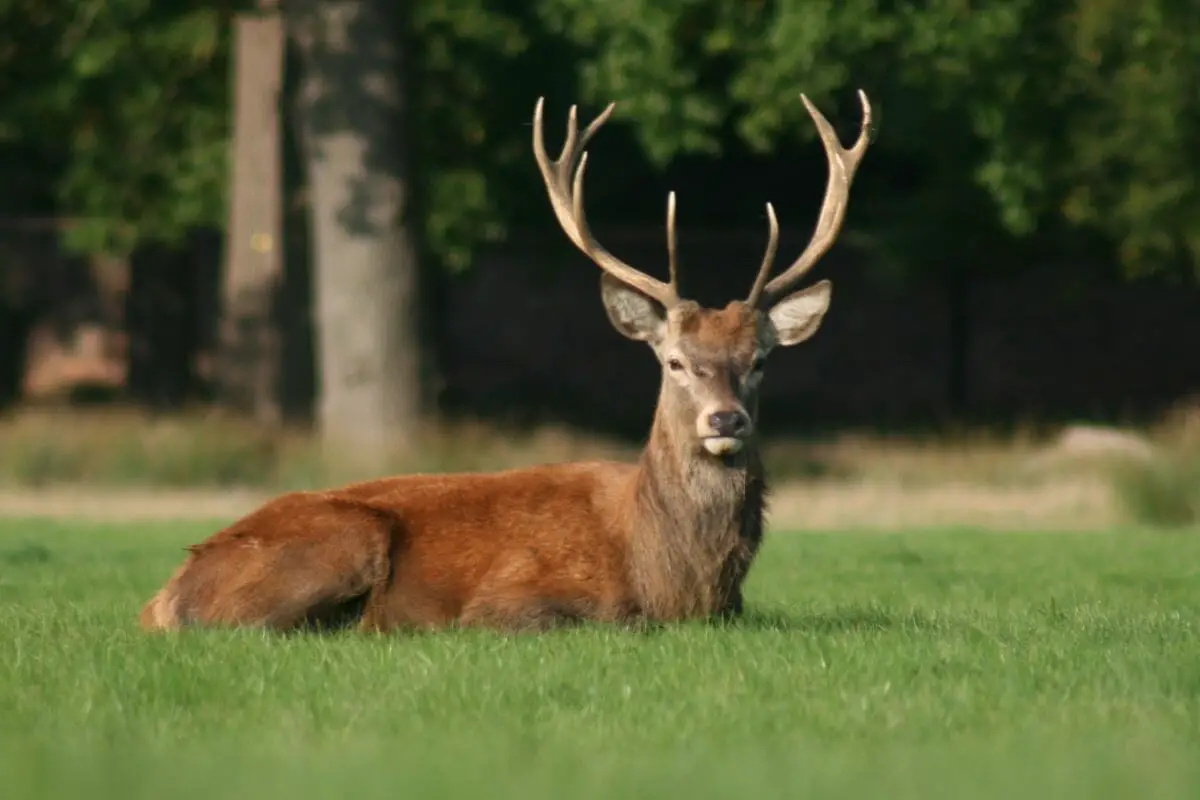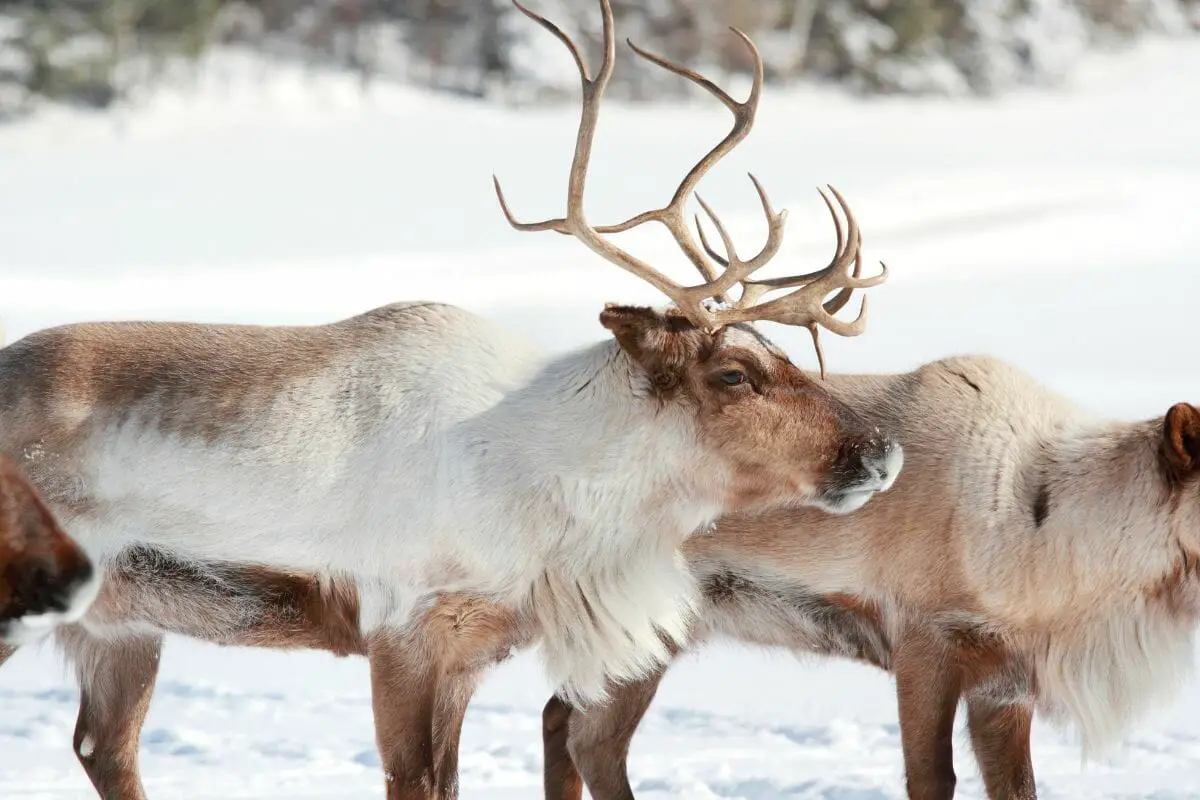Whilst they can often feel like animals that fade into the background, deer are perhaps some of the most impressive and successful animal groups on the planet.
For one thing, their antlers, whilst perhaps not as immediately spectacular as a rhino’s horn, an elephant’s tusks, or even the mane of a lion, are still a visually unique feature that sets them apart from pretty much any other.
Not only that, but they can also live in a massive range of biomes and environments.
Whilst they are often associated with woodland areas, deer can live in the Savannah, the rainforests, the dessert, and even the frozen edges of our planets.

And, perhaps because of this last point, deer are found pretty much everywhere, being found on almost every continent, except Australia and Antarctica.
If there is a patch of wilderness in the world, chances are that there will probably be a deer not too far away from it.
Because of this distribution across the globe, there are dozens of distinct deer types and species that have cropped up over time.
So many that it can be a little tricky to tell them apart from one another. Well, that is what this guide is here for!
In this list, we are going to show you some of the many types of deer that you can find out there, and how to tell them apart from other species, such as markings that set them apart, where they live, and how and what they feed on.
White-Tailed Deer
Starting off our list, we have the white-tailed deer.
Distribution
This species is probably one of the most common that can be found across the United States, indeed being found all across North America, from the south of Mexico, all the way to the Peruvian mountains in Canada.
It is even possible to find this species across the northern countries of South America, with some being found as far south as Columbia and Peru!
Appearance
This particular species of deer are known to change the color of its fur depending on the time of year.
Whilst most white-tailed deer are a tan or brown color throughout the summer months, they usually fade to grayish color through the winter.
So, if their fur coat isn’t always the best indicator, what is the best way of identifying them.
Generally, most white-tailed deer will have white fur around their throat areas, as well as the tuft of white fur on the bottom side of their tails, hence their name.
Diet
Like every species of deer, white-tailed deer are herbivores, eating various grasses, as well as new buds and growth when they sprout. In winter, they can also survive on woody twigs and branches for a short time.
Axis Deer
Next on our list, from North America to South Asia, we have the axis deer.
Distribution
The Indian subcontinent and its surrounding areas have a wide variety of deer species, and the axis deer is one of them.
This species of animal is usually spotted across India, as well as in many surrounding and nearby countries, such as Bhutan, Sri Lanka, and Bangladesh.
They can live across many subtropical areas in the region, as well as at many different altitudes.
Because of its wide distribution, it is also often prized by hunters.
Appearance
One of the reasons that they are a prize target for a hunter is partly due to their distinctive fur coats.
Alongside the tan or brown fur that many deer have, the axis deer’s coat is also peppered with many white spots.
They are also known for having an impressive array of antlers, that grows into a large lyre-like shape.
Whilst antlers are usually shed every year because this species is located in the tropics, they often keep the same horns from year to year.
Diet
Like many other deer, the axis deer is a grazing herbivore and usually feeds on grasses, bushes, and other low-lying plant life, although it won’t turn its nose up to a branch or twigs if there is a shortage of food.
Caribou (Reindeer)

For a deer species that is tied to the holiday season, we have the Caribou, better known (at least when domesticated) as the reindeer.
Distribution
Caribou are primarily found across the northern regions of North America and Eurasia, with them often living around higher altitudes in Europe, such as in mountain ranges.
Thanks to their widespread distribution, there are actually over 10 subspecies of reindeer, from the Finnish forest reindeer to the porcupine caribou.
Appearance
Like many other deer species, caribou have brown fur coats. However, their coats also often have patches of gray and tanned fur alongside, especially on their underbelly.
Both Males and females grow antlers, but the males tend to be more elaborate and grow larger on average.
The noses on caribou also tend to be more pronounced than on other species of deer in the world.
Diet
Being subarctic animals, caribou tend to eat the grasses and mosses that grow at these latitudes, as well as lichen, thanks to their four-chambered stomachs.
Moose
What, you didn’t realize that moose were a type of deer?
Much to the surprise of many people, moose are a member of the deer family, making them the largest species of deer that is currently alive on the planet today.
Distribution
Moose, or elk as they are somewhat confusingly known in Eurasia, live in the subarctic regions of the Northern Hemisphere, being found in North America, Northern Asia, and in isolated pockets across Northern Europe
Appearance
As we mentioned, Moose is the largest living deer species in the world.
And big they certainly are! Whilst moose of around 4 ½ feet aren’t uncommon, the largest moose can be up to 6’ 11 at the shoulder in some of the larger examples!
Aside from size, moose also have larger and more bulbous heads than other deer species, and their antlers tend to be wide and flat as well.
Diet
Unlike other deer, moose are browsers, meaning that they prefer to eat woody branches and leaves more than they feed on grasses, although grasses do still make up a staple part of a moose’s diet.
Final Thoughts
As you can see, the variety of deer across the world is very surprising. And this is just the tip of the iceberg too!
- 15 Most Common Animals Living In Ponds - 2024-04-23
- What are the Characteristics Of a Wolf – (Characteristics & Interesting Facts) - 2024-04-23
- Animals That Live In The Abyssal Zone - 2024-04-22








